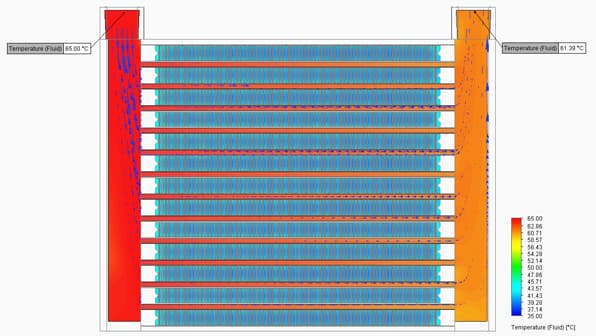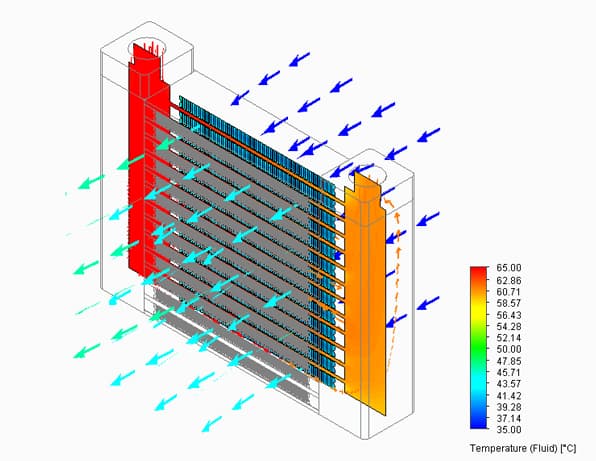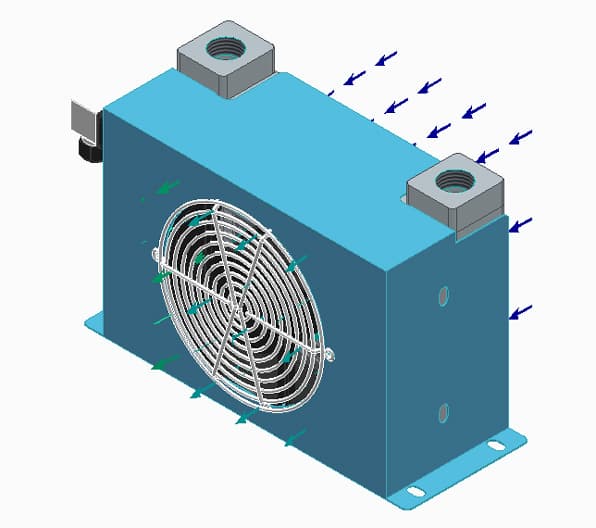Introduction of Siemens FLOEFD CFD Software: Features & Applications

Siemens FLOEFD (Fluid Flow and Thermal Analysis) is an advanced computational fluid dynamics (CFD) software specifically designed for simulating fluid flow and heat transfer.
Its exceptional functionality and flexibility have made it increasingly popular in engineering design, especially in applications involving heat exchange and cooling.
Key Features of FLOEFD
- Real-Time Simulation Capabilities:
FLOEFD allows engineers to perform real-time simulations during the design process, meaning users can instantly see the impact of design changes on fluid flow and thermal performance. This feature not only accelerates the design iteration process but also enhances the quality of the final product.
- Seamless CAD Integration:
FLOEFD operates directly within mainstream CAD software (such as SolidWorks and CATIA), significantly reducing the need for data translation and eliminating potential errors between different platforms. This integration results in a smoother design workflow.
- Multi-Physical Field Simulation:
The software supports a wide range of physical phenomena, including fluid flow, heat transfer, turbulence, mass transfer, and chemical reactions. This capability allows engineers to conduct comprehensive evaluations of complex systems and perform more in-depth design optimizations.
- User-Friendly Interface:
The interface of FLOEFD is designed with user experience in mind, making it accessible even to engineers without extensive CFD experience. Its intuitive operation and visual result displays enable engineers to quickly understand simulation results and make adjustments.
- Powerful Post-Processing Features:
FLOEFD offers robust data analysis and post-processing capabilities. Users can generate detailed reports and visual graphics to facilitate the interpretation of simulation results, which is essential for design validation and client reporting.

Applications of FLOEFD
- Heat Exchanger Design:
In the design of heat exchangers, FLOEFD helps engineers simulate heat flow and fluid dynamics, assessing heat transfer efficiency. This assists in optimizing fin designs, piping layouts, and material selections to ensure high product performance.
- Electronic Cooling:
FLOEFD is widely used in cooling solutions for electronic devices. By simulating fluid flow around heat sources, engineers can design more effective cooling strategies to prevent overheating.
- Industrial Equipment:
In the design of various industrial equipment, FLOEFD can analyze fluid flow, heat transfer, and pressure loss, helping to create more reliable and efficient systems.
- Environmental Engineering:
FLOEFD can also be applied in environmental engineering fields, such as wastewater treatment and air circulation simulations, aiding in improving the efficiency and sustainability of environmental systems.

Siemens FLOEFD stands out as a powerful thermal simulation software that provides engineers with comprehensive and flexible solutions capable of enhancing design performance and efficiency across a variety of applications. Its real-time simulation, CAD integration, and multi-physical field analysis capabilities make it an indispensable tool in modern engineering design. As technology continues to advance, FLOEFD will play an increasingly significant role in developing more efficient and sustainable engineering solutions.
Read Other News
-
2025 / 03 / 05



